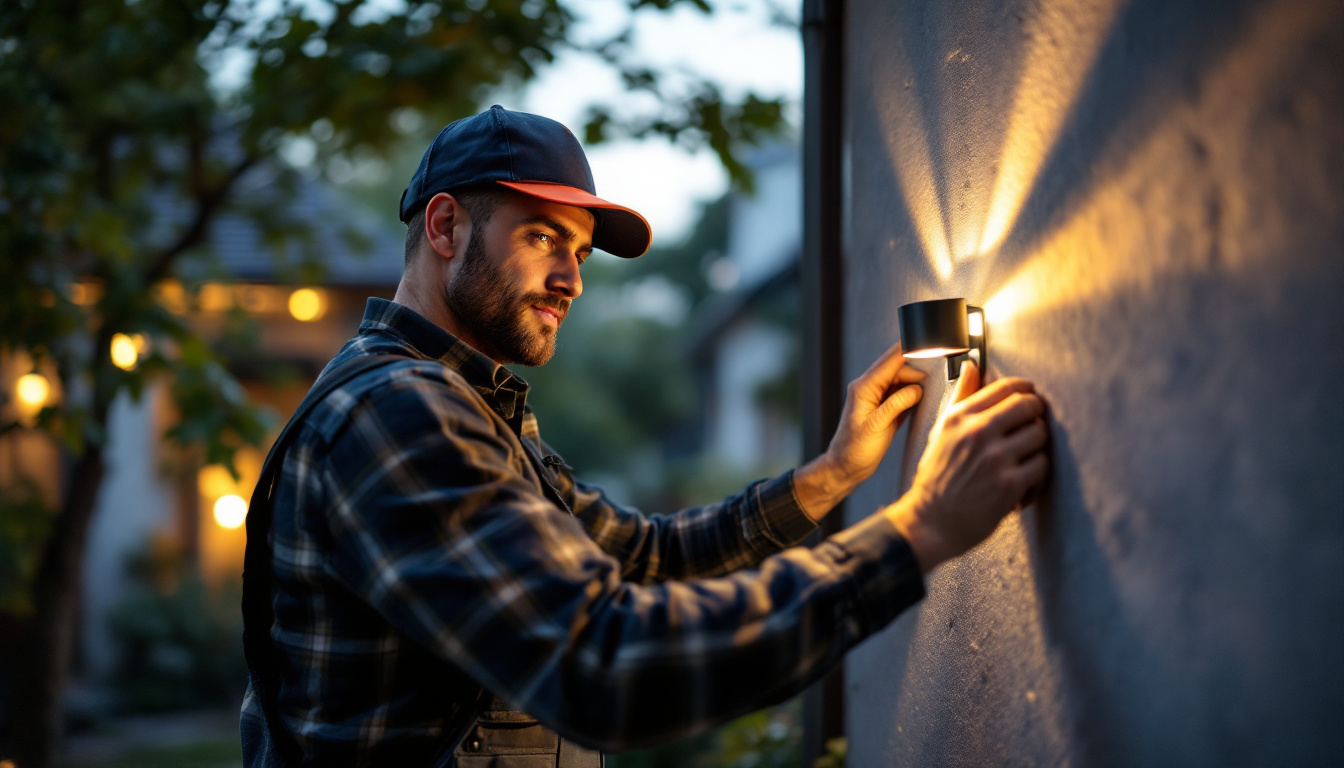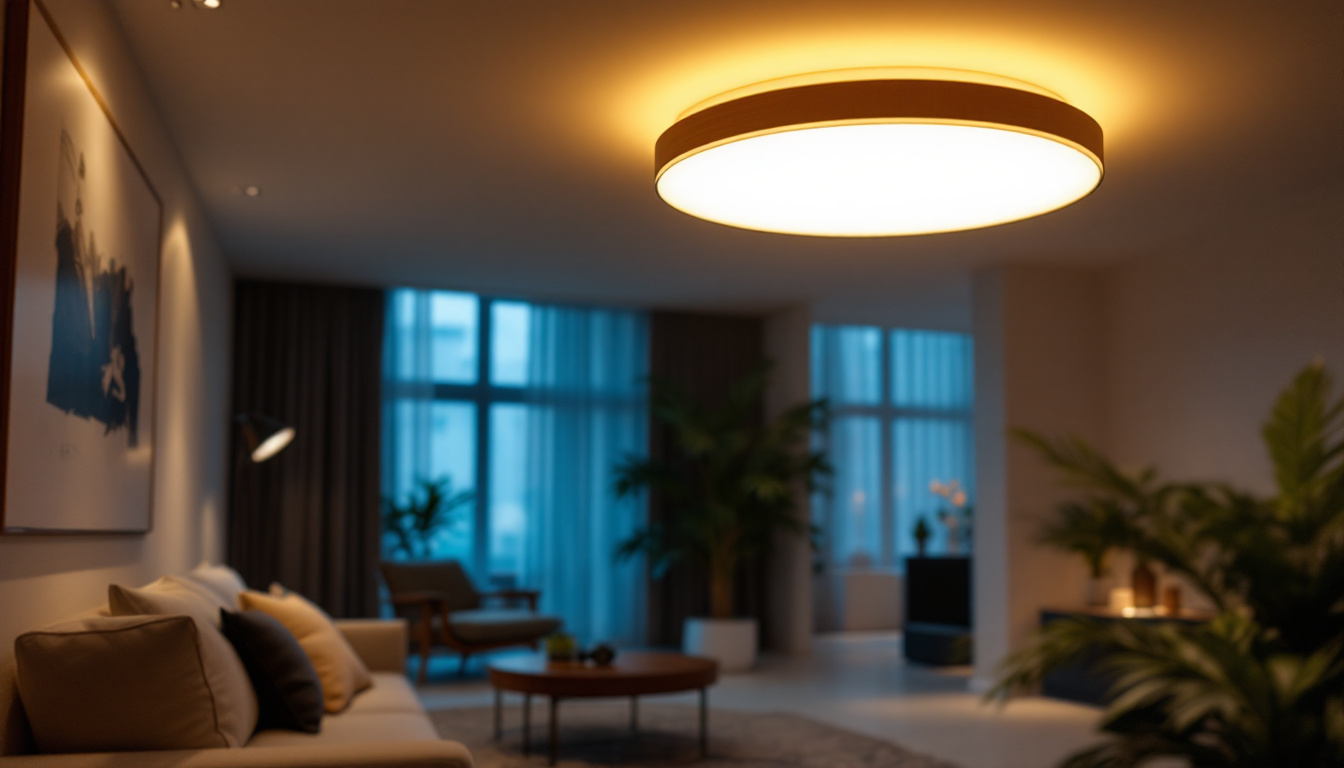
The healthcare sector is one of the most rapidly evolving industries, and with this evolution comes the necessity for specialized solutions, particularly in lighting. For lighting contractors, understanding the unique requirements of healthcare facilities can significantly influence their profitability. This article delves into how healthcare lighting impacts the bottom line for lighting contractors, exploring key factors such as regulatory compliance, energy efficiency, and the overall patient experience.
Healthcare lighting is not just about illumination; it plays a critical role in patient care and staff efficiency. Proper lighting can enhance the healing environment, reduce errors, and improve overall satisfaction. For lighting contractors, recognizing the importance of tailored lighting solutions can lead to better project outcomes and increased customer loyalty.
Healthcare facilities, including hospitals, clinics, and long-term care centers, have specific lighting needs that differ from other commercial spaces. These needs include adequate illumination for medical procedures, ambient lighting for patient comfort, and task lighting for staff efficiency. Each area of a healthcare facility may require a different approach to lighting design, which presents both challenges and opportunities for lighting contractors.
For example, operating rooms require bright, shadow-free lighting to ensure precision during surgeries, while patient rooms benefit from softer, warmer light to create a calming atmosphere. Understanding these nuances allows contractors to offer customized solutions that meet the specific demands of each space. Moreover, the integration of smart lighting systems can further enhance these environments by allowing for adjustable brightness and color temperatures that can be tailored to the time of day or specific activities, thereby improving both patient outcomes and staff performance.
Healthcare lighting is subject to a variety of regulations and standards, including those set by organizations such as the Illuminating Engineering Society (IES) and the American National Standards Institute (ANSI). These guidelines dictate everything from the intensity of light to the color temperature required in different areas of a healthcare facility.
Lighting contractors must stay informed about these regulations to ensure compliance, which can significantly impact project timelines and budgets. Failure to adhere to these standards can lead to costly reworks, delays, and potential legal ramifications. Therefore, investing time in understanding and implementing these guidelines is essential for maintaining a healthy bottom line. Additionally, many facilities are now prioritizing energy efficiency and sustainability in their lighting choices, aligning with broader environmental goals. This shift not only helps in reducing operational costs but also enhances the facility’s reputation as a forward-thinking institution committed to both patient care and ecological responsibility. As such, lighting contractors who can navigate these evolving standards will find themselves in high demand, as they can provide solutions that are both compliant and innovative.
Energy efficiency is a critical consideration in healthcare lighting, not only for environmental reasons but also for cost savings. Healthcare facilities are among the highest consumers of energy, and lighting accounts for a significant portion of this consumption. By implementing energy-efficient lighting solutions, contractors can help healthcare facilities reduce their energy costs and improve their sustainability profile. This not only benefits the bottom line of these institutions but also contributes to a healthier environment, which is particularly important in settings dedicated to healing and wellness.
One of the most effective ways to enhance energy efficiency is through the use of LED lighting. LEDs consume significantly less energy than traditional incandescent or fluorescent bulbs and have a longer lifespan, reducing maintenance costs. For lighting contractors, promoting LED solutions can lead to increased sales and customer satisfaction. The versatility of LED technology allows for a wide range of applications, from surgical suites that require precise color rendering to patient rooms that benefit from softer, warmer tones. This adaptability makes LEDs an ideal choice for the diverse lighting needs found within healthcare environments.
Moreover, many healthcare facilities are looking to achieve sustainability certifications, such as LEED (Leadership in Energy and Environmental Design). By providing energy-efficient lighting options, contractors can help their clients meet these certification requirements, further enhancing their value proposition. In addition to energy savings, the use of LED lighting can significantly improve the quality of light in healthcare settings, which is crucial for patient recovery and staff productivity. Studies have shown that well-designed lighting can positively influence mood, reduce stress levels, and even enhance the overall patient experience.
In addition to LED technology, smart lighting systems are gaining traction in healthcare settings. These systems allow for automated control of lighting based on occupancy and daylight availability, optimizing energy use while maintaining comfort and safety. Contractors who can integrate smart technology into their lighting designs will not only meet the growing demand for efficiency but also position themselves as forward-thinking providers in the industry. The ability to remotely control and monitor lighting systems can lead to significant operational efficiencies, enabling healthcare facilities to respond quickly to changing needs and conditions.
Furthermore, smart lighting systems can be integrated with other building management systems, allowing for a holistic approach to energy management. For instance, when combined with HVAC systems, smart lighting can adjust not only to occupancy but also to the temperature and humidity levels in a room, ensuring optimal conditions for both patients and staff. This level of integration not only enhances energy efficiency but also supports the overall goal of creating a more responsive and adaptable healthcare environment. As technology continues to evolve, the potential for smart lighting solutions in healthcare settings will only expand, offering even greater opportunities for innovation and improvement.
Lighting plays a crucial role in shaping the patient experience within healthcare facilities. Research has shown that appropriate lighting can reduce anxiety, improve mood, and even accelerate recovery times. For lighting contractors, understanding the psychological effects of lighting can lead to more effective designs that enhance patient satisfaction.
A well-designed lighting scheme can create a calming and healing environment for patients. Soft, warm lighting in patient rooms can help reduce stress, while brighter, cooler lighting in treatment areas can promote alertness and focus. By tailoring lighting solutions to the specific needs of different areas, contractors can significantly enhance the overall patient experience.
Additionally, incorporating natural light into healthcare design has been shown to have positive effects on patient well-being. Contractors who can implement solutions that maximize natural light, such as skylights or large windows, will not only improve the aesthetic appeal of the space but also contribute to better patient outcomes.
It’s not just patients who benefit from effective lighting; healthcare staff also require optimal lighting conditions to perform their duties efficiently. Adequate task lighting in work areas can reduce eye strain and fatigue, leading to increased productivity and job satisfaction. Lighting contractors should consider the needs of healthcare staff when designing lighting solutions, as this can lead to improved staff retention and morale.
For lighting contractors, understanding the financial implications of healthcare lighting projects is essential. While the initial investment in specialized lighting solutions may be higher than traditional options, the long-term savings and benefits can far outweigh these costs. By presenting a clear return on investment (ROI) to clients, contractors can justify the expenditure and secure more projects.
As previously mentioned, energy-efficient lighting solutions can lead to significant cost savings over time. Healthcare facilities that invest in LED and smart lighting technologies often see a reduction in their energy bills, which can free up funds for other critical areas of operation. Contractors who can illustrate these savings to potential clients will enhance their appeal and increase their chances of winning contracts.
Furthermore, reduced maintenance costs associated with longer-lasting lighting solutions can also contribute to overall savings. By emphasizing the durability and efficiency of modern lighting technologies, contractors can position themselves as valuable partners in the financial sustainability of healthcare facilities.
Investing in high-quality lighting solutions can also enhance the overall value of a healthcare facility. Well-lit environments are more attractive to patients and staff alike, contributing to a positive reputation and potentially increasing patient volumes. Contractors who can demonstrate how their lighting solutions can elevate the facility’s value will be better positioned to secure contracts and foster long-term relationships with clients.
Successful healthcare lighting projects often involve collaboration between various stakeholders, including architects, interior designers, and healthcare administrators. Lighting contractors must be proactive in engaging with these parties to ensure that their designs align with the overall vision for the facility.
Establishing strong relationships with healthcare professionals can lead to more successful projects and repeat business. Contractors should take the time to understand the specific needs and challenges faced by healthcare providers, allowing them to offer tailored solutions that address these concerns.
Networking within the healthcare community can also open doors to new opportunities. Attending industry conferences, participating in local healthcare initiatives, and joining professional organizations can help contractors stay informed about trends and needs within the sector.
In today’s digital age, technology plays a crucial role in facilitating collaboration. Utilizing design software and project management tools can streamline communication and ensure that all stakeholders are on the same page throughout the project lifecycle. By embracing technology, contractors can enhance their efficiency and improve project outcomes, ultimately benefiting their bottom line.
Healthcare lighting is a multifaceted field that presents both challenges and opportunities for lighting contractors. By understanding the unique needs of healthcare facilities, emphasizing energy efficiency, and focusing on the patient experience, contractors can significantly impact their bottom line. Moreover, building strong relationships with healthcare professionals and leveraging technology for collaboration can further enhance project success.
As the healthcare industry continues to evolve, lighting contractors who adapt to these changes and provide innovative, compliant, and efficient lighting solutions will not only thrive but also contribute to the overall improvement of healthcare environments. The bottom line is clear: investing in specialized healthcare lighting can lead to increased profitability and a more sustainable future for lighting contractors.
Ready to enhance your healthcare lighting projects and boost your bottom line? At LumenWholesale, we provide lighting contractors with the highest quality, spec-grade lighting products at unbeatable wholesale prices. Say goodbye to inflated markups and hello to a vast selection that meets rigorous industry standards. With free shipping on bulk orders, you can trust that you’re getting premium lighting solutions at the best value — no hidden fees, no compromises. Elevate your lighting game and create healing environments that benefit both patients and staff. Discover wholesale lighting at the best value today and light the way to a brighter future with LumenWholesale.

Discover effective strategies for lighting contractors to tackle common challenges in installing wall light solar systems.

Discover the latest trends and expert tips from top lighting contractors on choosing and installing LED ceiling lights.

Discover effective strategies for lighting contractors to tackle industry challenges in “Switch And Plug: Lighting Contractors, How to Overcome Challenges.” Learn how to enhance project efficiency, manage client expectations, and stay ahead in a competitive market..

Discover the fascinating world of solar lights monkeys and how they can transform your outdoor spaces.